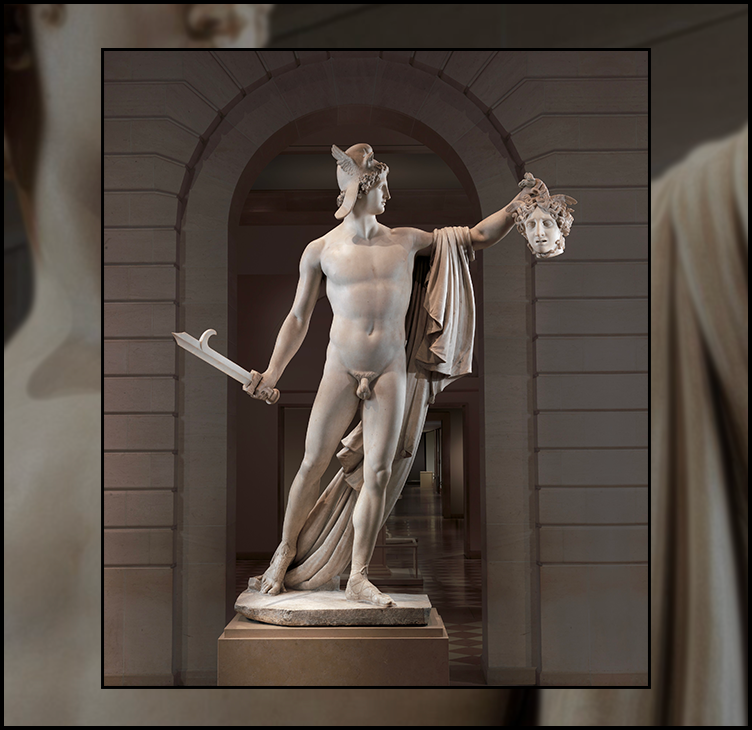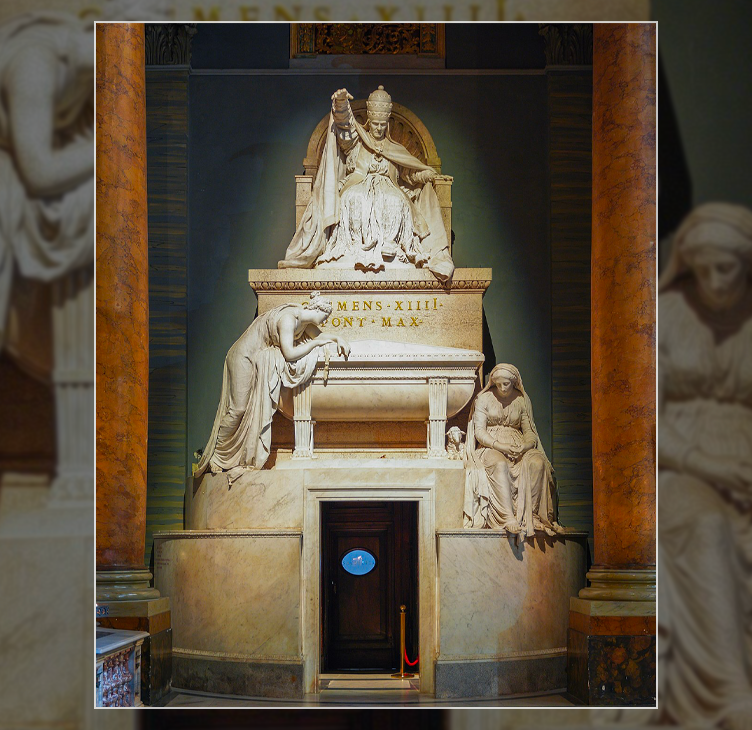Antonio Canova, master of neoclassical sculpture
If Jacques-Louis David is considered to be the painter of his generation in France and maybe up to Italy, Antonia Canova is the first artist who gained an international recogniton not only in Europe but also in other far-away regions such as America. His popularity was so high that he is the first artist who had a monument erected in his honor while he was still alive.
After Lawrence, Sir Thomas
Portrait of Antonio Canova (circa 1800-1825)
Louvre
© 2000 RMN-Grand Palais (musée du Louvre) / René-Gabriel Ojéda
In France, Jean Antoine Houdon may be considered as a prominent sculptor, however his reputation was mainly established among the elite while A.Canova reached a far broader audience thanks notably to his various diplomatic activities enabling him to work for Napoleon, the Hapsburgs, Popes, Liberals, Bankers, Senators and so on….
Antonio Canova was born in 1757 in Italy in a provencial town among a poor class family. Despite his large celebrity, his personal character remain up to this day quite mysterious and vague. At the young age of 11 he started as an apprentice in the workshop of Giuseppe Bernard, a sculptor specialized in large garden sculptures. Even though he certainly learnt a lot in this workshop, the young and ambitious Canova quickly hoped for a more personal and singular art. In 1768 he decided to move to Venice where he discovered the rich cultural environment of this city including the ancient classical arts which he learnt by observing Greco Roman and Renaissance sculptures.
Antonio Canova
Perseus with the Head of Medusa (1804–1806)
The metropolitan museum of art
© MET Museum
In 1775 he settled his own workshop studio where he created his first original sculpture, Daredalus and Iracus, a piece that raised attention among the Venician world. The revenue generated from the sale of this first major artwork enabled Canova to take a journey to Rome, a mendatory step for any aspiring artist since the 18th century. In this itlian capital, Canova enjoyed and trained his eyes to both the Baroque artworks as well as ancient sculptures. During this trip, the young sculptor developed a strong taste for the ancient Rome and antiquity in general, an influence remaining strong in his work all along his artistic career.
Antonio Canova
Daedalus and Icarus (1777-1779)
Museo Correr
© Fondazione Musei Civici di Venezia
The Tomb of Pope Clement XIV, a project Canova worked on from 1783 to 1787, was his first large public commission and enabled him to impose himself as an international, prominent and woreshiped sculptor. From that time, his opinion and judgments became law among the art world and his autority was equal to the one Michelangelo or Bernini once had. While he was finishing the Tomb of Pope Clement XIV he was also comissioned with the tombe of Clement XIII, a project which confirmed his triumph and great reputation.
Antonio Canova
Tomb of Clement XIV - 1783
Santi Apostoli Collection, Rome
During this period, Canova also created more private artworks of smaller size such as Cupid and Psyche ( 1787-1793), comissioned by an English patron, which are inspired by Homeric and Socratic themes. This lyrical sculpture was exhibited in France and raised the admiration of many people including Napoleon himself. Considered to be one of Canova’s masterpiece, it represents the moment when Psyche is saved from death by the kiss of love and is characterized by a lyrical armony between both bodies expressed in every details. Through this 3D sculpture its viewer can feel a multitude of expression steming from both bodies, ranging from tenderness to love.
Antonio Canova
Cupid and Psyche ( 1787-1793)
Louvre
© 2011 RMN-Grand Palais (musée du Louvre) / René-Gabriel Ojéda
Until the end of the 18th century France was not promoting sculpture as an art and the revolutionary spirit still present was refusing to give the limelight to any foreign artist. However, the crowning of Napoleon and the establishement of the Empire regime deeply changed this situation, pushing forward Neoclassical spirit and style the main. Furthermore, Napoleon was proud of his personal italian legacy and was keen to promote italian artists, including Antonio Canova.
Bust of Napoleon
After a model by Antonio Canova Italian (ca. 1808–14)
The metropolitan museum of art
© MET Museum
The capacity of Canova to build strong relationships with so many courts is all the more impressing as at that time most of them were at war with each other, as if his art was above any conflicts. From 1800 until the fall of the French Emperor in 1814, Canova was highly active and his artistic career probably reached its peak during this period.
We may note that apart from being a sculptor Canova was also an active painter who created hundreds of artworks, some of them of a exceptional quality such as the portrait of Amedeo Svayer and Lamentation over the dead christ.







